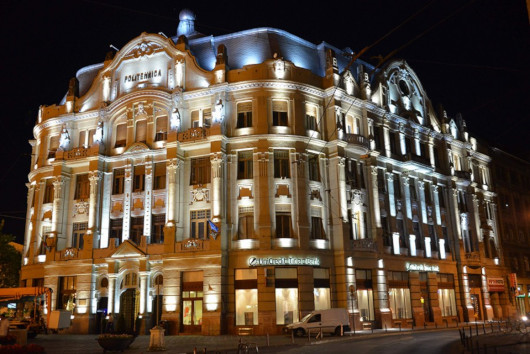 |
Topics
Round Table
Sponsors
Venue
Discover a fairy tale Romania!
About Politehnica University of Timisoara

Established in 1920, shortly after the union of Romanian territories, in a European context marked by the redefinition of states and by the aftermath of World War I, the Polytechnic School in Timisoara - as was originally called - was the answer to one of the requirements of the Romanian society of the time, namely the formation of engineers.
Politehnica University Timisoara, a university of advanced research and education, is today one of the traditional Romanian schools and is recognized nationally and internationally both through the work of generations of teachers and the outstanding work of prestigious academics...

About Timisoara
The first record of the city of Timisoara, built on the site of an ancient Roman fortress called Castrum Regium Themes, dates back to 1212.Over the years, Timisoara, the largest city in western Romania, has been influenced by many cultures. The Romans used it as an important crossroads fortress until the Tatars destroyed it in the 13th century. Conquered by Turkish armies in 1552, Timisoara remained under their protection until 1718 when the region of Banat came under Austrian rule for two centuries. Timisoara later became a vital commercial and manufacturing town. Turks, Austrians, Germans and Serbs all left their mark and their influence can be seen in neighborhoods throughout the city even today.
The charm of this city, settled on the northern bank of the Bega River, lies in its distinct architectural character and vibrant cultural life. Frequently referred to as "Little Vienna," Timisoara is home to year-round musical and theatrical performances, art galleries, museums and a buzzing nightlife. A progressive, cosmopolitan place, Timisoara was the first city in Europe and second in the world after New York, to use electricity to illuminate its public streets. ....

Important Dates
|
15 March 2019 Abstract Submission Date |
|
30 March 2019 Notification of Acceptance |
|
30 May 2019 Full Paper Submission Date |
|
30 June 2019 Notification of Acceptance Date |
|
31 August 2019 Final Paper Submission Date |
Past Events
|
CIEM 2011 - Energy for a sustainable development |
|
CIEM 2013 - Green and smart energy |
|
CIEM 2015 - Clean and safe power |
| CIEM 2017 - Energy saved today is assset for future |
With Support


